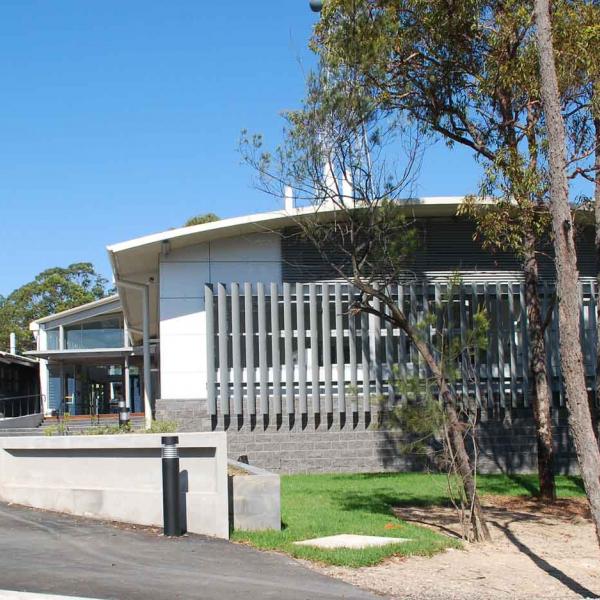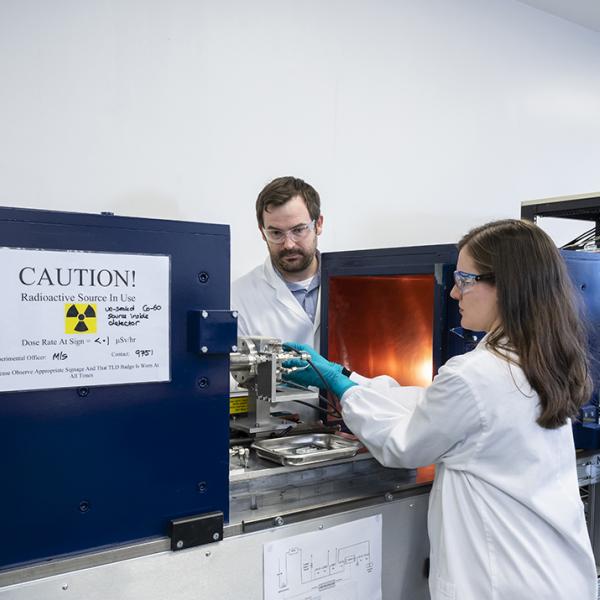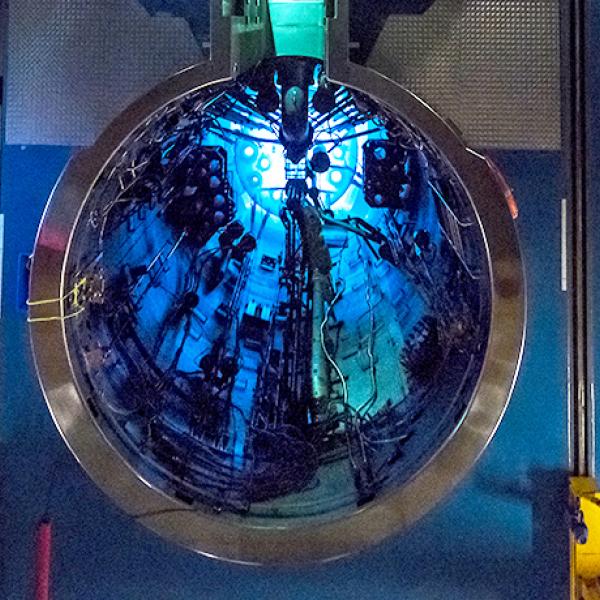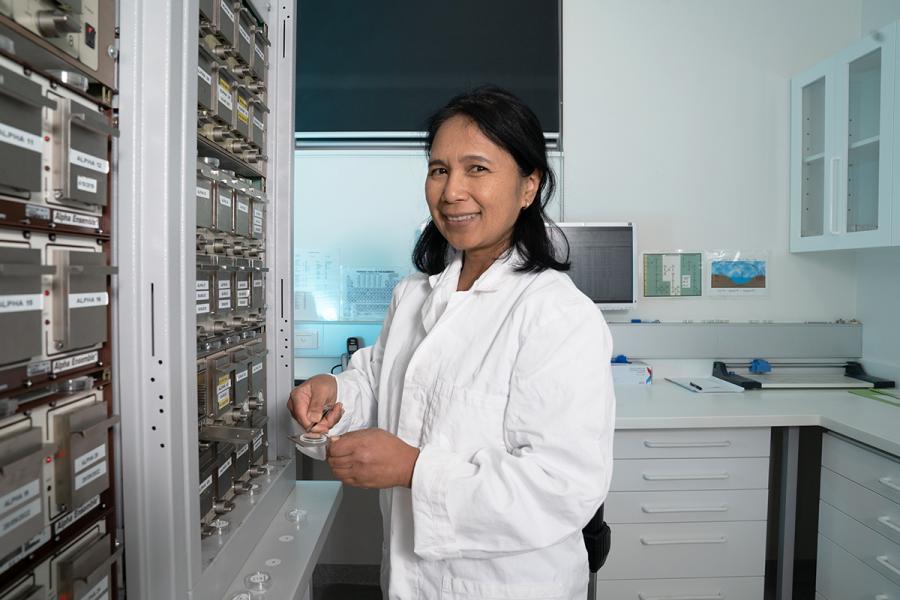
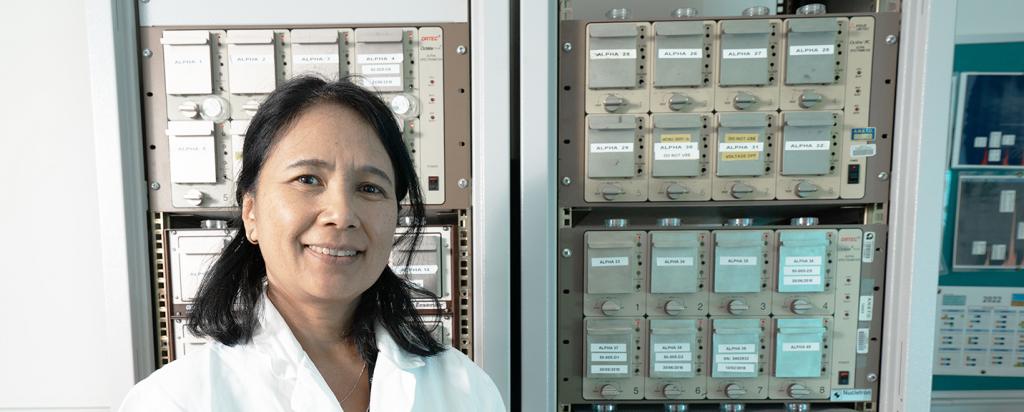
Published on the 18th November 2022 by ANSTO Staff
Women who work in the nuclear science and technology sector work across diverse areas beyond the operation of reactors and the production of nuclear medicine.
A group of women at ANSTO with specialist expertise in the handling of radioactive materials and the detection and measurement of radioactivity are making a significant contribution to their respective fields.
In this series, ANSTO will profile six female professionals from the nuclear stewardship science group and detection and imaging.
Nuclear stewardship at ANSTO refers to a range of activities to support the safe use of radioactivity to benefit Australia. It comprises Radioactivity measurement standards, Radioanalytical chemistry Environmental radioactivity measurements, Nuclear security science and Environmental monitoring.
Atun Zawadzki is the first staff member to be featured in this series, who works in the field of environmental radioactivity. ANSTO has unique capabilities in the detection of ultra-low levels of radioactivity.
Atun manages the low level radioanalytical facility, which uses nuclear science to measure radioactivity in the environment.
She works in this state-of-the art facility, which consists of a radiochemistry laboratory and instrumentation facilities for measuring alpha, beta and gamma emitting radionuclides. The gamma-ray spectrometry facility was built with building materials which were carefully selected to minimise background radioactivity in the room.
Apart from a long commute, Atun does not find any special challenges in working in a nuclear organisation.
She is well aware, however, of some of the misconceptions about nuclear, in which people are more aware of the hazards and disadvantages as opposed to the benefits from the application of nuclear science and technology.
Atun overcame the challenges of coming to Australia from Indonesia when she was 14 with very little understanding of the English language to have a highly successful career.
After completing high school, she studied applied chemistry at the University of Technology Sydney (UTS).
“I came to ANSTO to complete my ‘Year in Industry’ training, which was a requirement for my degree, working at the analytical chemistry laboratory which was part of the Environmental Science Program in 1990.”
She continued working for ANSTO as an analytical chemist specialising in trace metal analysis until about year 2000 when she was transferred to the radiochemistry laboratory, where she built her expertise in radiochemistry and has remained until the present time.
The drive to be successful keeps her motivated and contributing to some of the challenges that Australia faces.
“It gives a me great deal of satisfaction to contribute my expertise to research projects, such as studies of climate change from human and natural impacts. Our techniques allow us to reconstruct the history of past environmental conditions that inform current environmental assessments.”
In 2019, she was part of the 'Blue Carbon Horizons Team’ led by the University of Wollongong that received the NSW Environment, Energy and Science (DPIE) Eureka Prize, for their environmental research that revealed on how coastal wetland captured blue carbon and could potentially mitigate the impacts of sea level rise.
In that study analysis of the radioactive isotopes of lead and caesium were important because they were used to accurately determine how quickly mangrove sediment was accumulating in the wetland zones.
Lead-210 ( 210Pb), a natural occurring isotope, adsorbs to the surface of sediment providing a “clock” for dating the sediment layers.
“We used the technique to date the sediment cores collected from the coastal wetlands in this study to determine the sediment accumulation rates” explained Atun
Caesium-137 (137Cs) was analysed to validate the 210Pb dating results because its levels are linked to its release during global nuclear testing in the fifties and early sixties of last century.
Atun has confidence in all measures in place to protect her from any prospective risks associated with the handling of radioactive materials.
“We use radioactive sources to calibrate the detectors to measure levels of radioactivity. All staff who handle radioactive sources must complete the Radiation Safety training course, which covers personal protective equipment requirements, managing radioactive spills, the operation of contamination monitors and related safe handling information,” said Atun.
And although some thoughts of retirement are around the corner, the work continues to motivate her.
She works to continually improve the powerful analytical techniques used in radioactivity measurements at ANSTO.
Looking back on her career Atun said that hard work and the drive to achieve brought her the level of success she has achieved.
